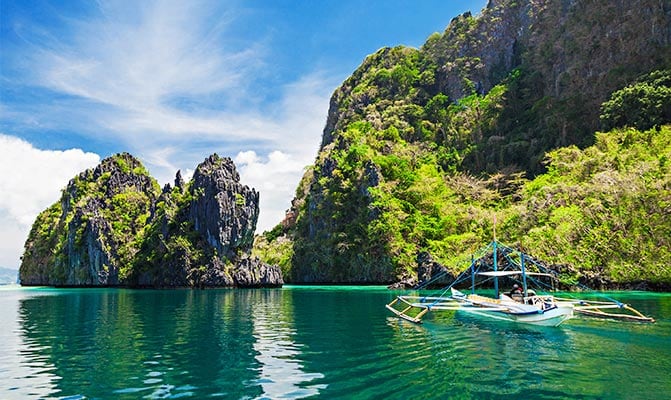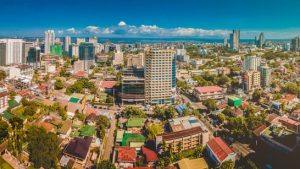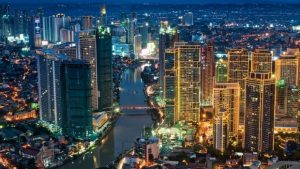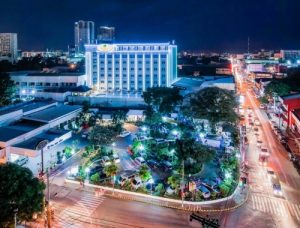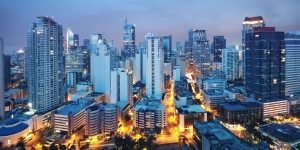Philippines : Safety by City
Warnings & Dangers in Philippines

OVERALL RISK : MEDIUM
In general, the Philippines are safe to travel if you are in tourist resorts. Beyond them, you need to be extremely careful, keep an eye on your belongings, and not walk the streets after dark.

TRANSPORT & TAXIS RISK : MEDIUM
Public transport in the Philippines is not safe, it does not go on schedule, and there are also many pickpockets. It is much safer to travel by taxi, especially in the dark. Use only licensed taxi services.

PICKPOCKETS RISK : HIGH
There are many pickpockets in the Philippines, as it is a popular tourist destination. On beaches, bazaars, bars, and train stations, you need to monitor your belongings and surroundings, especially. Be careful with those who ask or offer you help; do not shine with a lot of cash and expensive things.

NATURAL DISASTERS RISK : HIGH
In addition to frequent earthquakes and volcanic eruptions, on average, dozens of destructive typhoons occur annually in the Philippines. Examine the weather conditions before your visit here.

MUGGING RISK : MEDIUM
In tourist areas, you are unlikely to meet armed criminals. However, in Manila and large cities, this is likely. Do not walk the streets after sunset, be accompanied by friends, and do not get drunk in local bars.

TERRORISM RISK : HIGH
Terrorist groups have the intent and capability to carry out attacks anywhere in the country, including in the capital Manila and in places visited by foreigners, such as shopping malls, entertainment establishments, public transport (including airports and the metro system) and places of worship.

SCAMS RISK : MEDIUM
In the Philippines, fraud is common. Most often, scammers want to deceive tourists, raise the price of a taxi ride, sell fake lottery tickets, sell tours for non-existent excursions. Be vigilant and purchase goods and services in licensed stores.

WOMEN TRAVELERS RISK : MEDIUM
Women traveling alone to the Philippines can feel quite safe if they follow specific measures. Do not walk around the city at night. Do not draw attention to yourself with your clothes or expensive items. Return to the hotel by taxi if it is too late.
How Safe Is Philippines for Tourists?
The crime rate in the Philippines is average.
The main crimes are related to the theft of goods, car theft, vandalism, attacks, and corruption.
Use common sense when traveling around and around the Philippines, as in other developing countries.
It’s okay if you have a guide or a local friend in the Philippines.
This will help to avoid problems and fraud.
Although the inhabitants of these islands are generally friendly and hospitable, you need to know about the prevalence of poverty (especially in big cities) and what, unfortunately, accompanies it.
Better not to shine with expensive things and lots of cash – this can trigger theft.
Pickpockets are common in large cities.
There are also cases of a violent robbery in Manila when you can get an opiate in the bar and then rob you.
The police do not always work expeditiously and often expect bribes.
Therefore, try to avoid all dangerous situations.
Do not walk late at night through the streets and do not go into remote areas of the city.
Prostitution also flourishes in the Philippines, but it is officially banned.
Do not fall into this trap. Otherwise, you may incur a hefty fine.
By law, the Philippine National Police brutally abuses sex offenders, molesters, and people involved in prostitution.
Marijuana and Shabu (crystalline meth) are virtually prohibited.
Drug penalties are severe, and police resistance can lead to death.
Do I Need a Visa to Visit Philippines?
Visitors from 157 countries are permitted visa-free entry for periods ranging from 14 to 59 days. A valid passport is a must.
Which Currency Is Used in Philippines?
The Philippine peso, also referred to by its Filipino name piso is the official currency of the Philippines. It is subdivided into 100 centavos or sentimos in Filipino.
How's the Weather like in Philippines?
The best time to visit the Philippines is between the months of November and April which are the summer months in this Southeast Asian country. The wet season is from June to October and brings about quite a bit of rain with warm temperatures.
What Do I Need to Know about Airports in Philippines?
There are many airports in the Philippines, including international ones. The most basic and busiest is in the capital of the country – Manila. Nina Aquino International Airport, formerly known and still called Manila International Airport, is the airport serving Manila and its environs. It is located along the border between the cities of Pasay and Paranak, about 7 km south of Manila itself and southwest of Makati. NAIA is the leading international gateway for travelers to the Philippines.
Should I Get Travel Insurance for My Travels?
Just like anywhere else, the travel insurance policy is a must when visiting a foreign country. Make sure you got it before starting your journey, the customs officer may ask for it.
What Are Some Things to Do in Philippines?
The Philippines is a state in Southeast Asia in the western Pacific Ocean, consisting of more than 7,000 islands. Manila, the capital of the country, is known for its waterfront and the centuries-old Chinatown of Binondo. Travelers come to the Philippines to relax on beautiful beaches and enjoy water sports.
Is the Water in Philippines Safe to Drink?
There is sufficient water, but it’s not enough in highly populated areas, especially during the dry season. Tap water isn’t drinkable.
Is Uber Safe in Philippines?
There is an Uber taxi in the Philippines. You can call it from the application on your smartphone. The price of the trip will depend on the distance and time of day.
